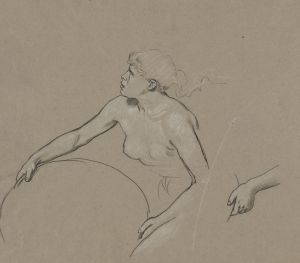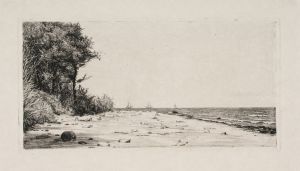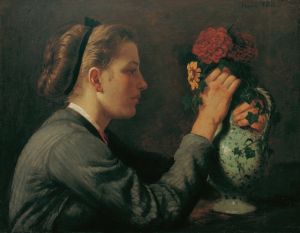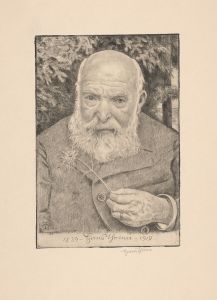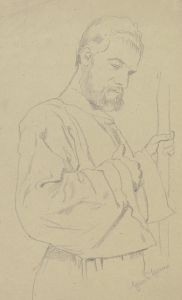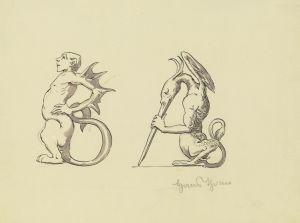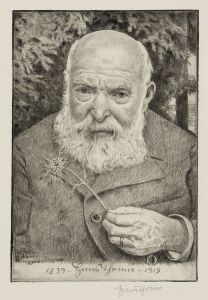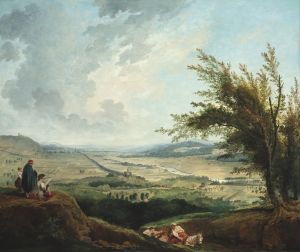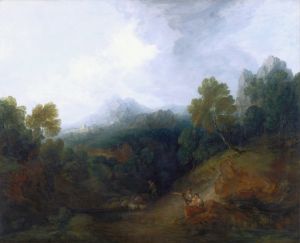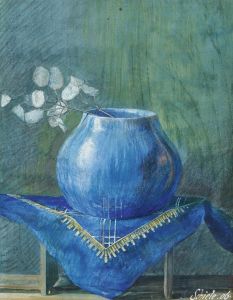
At the spring well
A hand-painted replica of Hans Thoma’s masterpiece At the spring well, meticulously crafted by professional artists to capture the true essence of the original. Each piece is created with museum-quality canvas and rare mineral pigments, carefully painted by experienced artists with delicate brushstrokes and rich, layered colors to perfectly recreate the texture of the original artwork. Unlike machine-printed reproductions, this hand-painted version brings the painting to life, infused with the artist’s emotions and skill in every stroke. Whether for personal collection or home decoration, it instantly elevates the artistic atmosphere of any space.
Hans Thoma (1839–1924) was a German painter associated with the Romantic and Realist movements. He is known for his depictions of landscapes, rural life, and allegorical themes, often infused with a sense of simplicity and harmony. One of his works, At the Spring Well (Am Brunnen in German), reflects his characteristic style and thematic focus.
At the Spring Well portrays a serene rural scene, featuring a young woman standing by a well, surrounded by lush greenery. The composition highlights Thoma's attention to detail and his ability to capture the tranquil beauty of nature. The figure of the woman is rendered with a sense of quiet dignity, emphasizing her connection to the natural environment. The painting exemplifies Thoma's interest in the idyllic and pastoral, themes that were central to much of his work.
Hans Thoma's art often drew inspiration from his upbringing in the Black Forest region of Germany, and this influence is evident in At the Spring Well. The setting of the painting, with its verdant landscape and rustic elements, reflects the artist's deep appreciation for the countryside and its traditions. Thoma's works frequently evoke a sense of nostalgia for a simpler, more harmonious way of life, which resonated with audiences during his time.
Thoma was influenced by both German Romanticism and the Realist movement, and his works often bridge these two styles. In At the Spring Well, the Romantic emphasis on nature's beauty and the Realist attention to everyday life are seamlessly combined. The painting's composition and use of light suggest a careful observation of the natural world, while its subject matter conveys a timeless, almost poetic quality.
Today, Hans Thoma is regarded as an important figure in 19th-century German art, and his works are held in various museums and collections. At the Spring Well is representative of his artistic vision and continues to be appreciated for its technical skill and evocative imagery. However, specific details about the painting's creation, such as its exact date or current location, are not widely documented.





